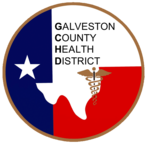

GALVESTON COUNTY, Texas — Galveston County Health District (GCHD) is issuing an important public health alert regarding Vibrio bacteria, a group of bacteria commonly found in marine environments. Galveston County Health District has been working closely with UTMB due to an increase of Vibrio cases this year. Recent reports of Vibrio infections have raised concerns about the potential health risks associated with exposure to these bacteria, especially during the summer when water activities peak.
Overview of Vibrio Bacteria
Vibrio are naturally found in warm coastal seawater around the world. The bacteria are present throughout the year but are more prevalent in summer when the water is warmer. Vibrio cholerae, Vibrio parahaemolyticus, and Vibrio vulnificus are the most common species responsible for infections. “While Vibrio bacteria can be present in Galveston waters, there’s no need to panic. Use common sense: avoid raw seafood, practice good hygiene, and stay informed to keep safe.” Dr. Phillip Keiser, the Local Health Authority and CEO of the Galveston County Health District, said. Statistics show it’s rare for a person to develop a severe infection from Vibrio bacteria. When such infections occur, it’s common for the affected person to have preexisting immune-suppressing health conditions and open sores or wounds.
Recent Outbreaks
Recent surveillance has identified an increase in Vibrio-related cases from Galveston Beach. The majority of reported cases involve severe wound infections from Vibrio vulnificus, with a few gastrointestinal illnesses from Vibrio parahaemolyticus and cholera-related illnesses from Vibrio cholera. Health officials are working diligently to investigate the sources of these infections and implement measures to prevent further cases.
Symptoms and Risks
Symptoms of Vibrio infections can vary depending on the species:
Preventive Measures
To protect yourself and others from Vibrio infections, the Health Organization recommends the following precautions:
What to Do If You Suspect an Infection
If you experience symptoms consistent with a Vibrio infection, such as severe gastrointestinal distress or wound infections following exposure to seawater, seek medical attention promptly. Early diagnosis and treatment are crucial to managing symptoms and preventing complications.
The Health District is committed to safeguarding public health and collaborating with local health departments and marine authorities to address this issue. We urge the public to follow the recommended preventive measures and to remain vigilant during the summer months.
Anyone with questions about their health status should consult their healthcare provider. Those with additional questions about Vibrio can find information online at www.cdc.gov/vibrio.
Update your subscriptions, modify your password or email address, or stop subscriptions at any time on your Subscriber Preferences Page. You will need to use your email address to log in. If you have questions or problems with the subscription service, please visit subscriberhelp.govdelivery.com.
This service is provided to you at no charge by Galveston County Health District.
|
||||